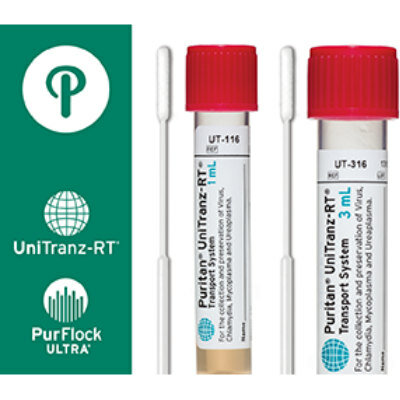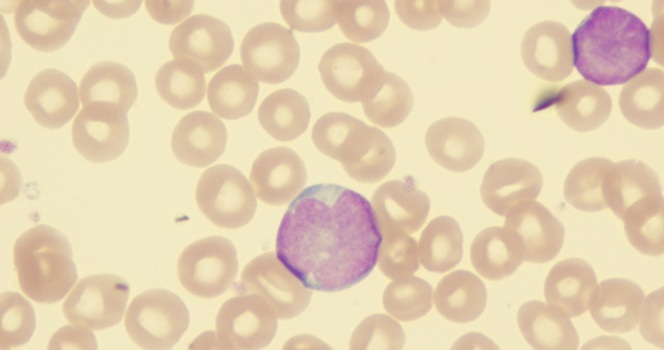New CRISPR Discovery Paves Way for Novel COVID-19 Testing Method
|
By LabMedica International staff writers Posted on 28 Apr 2021 |

Illustration
A novel diagnostic technology that has the potential to detect a variety of disease-related biomarkers in just one test can make tests for corona and other pathogens much more efficient.
Scientists from the Julius Maximilian University of Würzburg (Würzburg, Germany) have paved the way for a completely new diagnostic platform with LEOPARD - a CRISPR-based method that is highly multiplexable, with the potential to detect a variety of disease-related biomarkers in just one test.
Most conventional molecular diagnostics usually detect only a single disease-related biomarker. Great examples are the PCR tests currently used to diagnose COVID-19 by detecting a specific sequence from SARS-CoV-2. Such so-called singleplex methods provide reliable results because they are "calibrated" to a single biomarker. However, determining whether a patient is infected with a new SARS-CoV-2 variant or a completely different pathogen requires probing for many different biomarkers at one time.
CRISPR-Cas9 is principally known as a biomolecular tool for genome editing. Here, CRISPR-Cas9 function as molecular scissors that cut specific DNA sequences. These same scissors are naturally used by bacteria to cut DNA associated with invading viruses. Whether editing genomes or eliminating viruses, Cas9 cutting is directed by guide RNAs. The guide RNAs found in bacteria must pair with a separate RNA called the tracrRNA. The RNA couple then can work with Cas9 to direct DNA cutting.
LEOPARD, which stands for “Leveraging Engineered tracrRNAs and On-target DNAs for PArallel RNA Detection,” is based on the finding that DNA cutting by Cas9 could be linked to the presence of a specific RNA. This link allows LEOPARD to detect many RNAs at once, opening opportunities for the simultaneous detection of RNAs from viruses and other pathogens in a patient sample. In the future, LEOPARD's performance could dwarf even multiplexed PCR tests and other methods.
"We figured out how to reprogram the tracrRNAs to decide which RNAs become guide RNAs,” said Chase Beisel, professor at JMU and research group leader at HIRI. “By monitoring a set of matching DNAs, we can determine which RNAs were present in a sample based on which DNAs get cut. As part of the ongoing pandemic, LEOPARD could allow a doctor to figure out whether the patient is infected with SARS-CoV-2, if it’s a unique variant, and whether the sample was correctly taken or needs to be repeated - all in one test.”
Related Links:
Julius Maximilian University of Würzburg
Scientists from the Julius Maximilian University of Würzburg (Würzburg, Germany) have paved the way for a completely new diagnostic platform with LEOPARD - a CRISPR-based method that is highly multiplexable, with the potential to detect a variety of disease-related biomarkers in just one test.
Most conventional molecular diagnostics usually detect only a single disease-related biomarker. Great examples are the PCR tests currently used to diagnose COVID-19 by detecting a specific sequence from SARS-CoV-2. Such so-called singleplex methods provide reliable results because they are "calibrated" to a single biomarker. However, determining whether a patient is infected with a new SARS-CoV-2 variant or a completely different pathogen requires probing for many different biomarkers at one time.
CRISPR-Cas9 is principally known as a biomolecular tool for genome editing. Here, CRISPR-Cas9 function as molecular scissors that cut specific DNA sequences. These same scissors are naturally used by bacteria to cut DNA associated with invading viruses. Whether editing genomes or eliminating viruses, Cas9 cutting is directed by guide RNAs. The guide RNAs found in bacteria must pair with a separate RNA called the tracrRNA. The RNA couple then can work with Cas9 to direct DNA cutting.
LEOPARD, which stands for “Leveraging Engineered tracrRNAs and On-target DNAs for PArallel RNA Detection,” is based on the finding that DNA cutting by Cas9 could be linked to the presence of a specific RNA. This link allows LEOPARD to detect many RNAs at once, opening opportunities for the simultaneous detection of RNAs from viruses and other pathogens in a patient sample. In the future, LEOPARD's performance could dwarf even multiplexed PCR tests and other methods.
"We figured out how to reprogram the tracrRNAs to decide which RNAs become guide RNAs,” said Chase Beisel, professor at JMU and research group leader at HIRI. “By monitoring a set of matching DNAs, we can determine which RNAs were present in a sample based on which DNAs get cut. As part of the ongoing pandemic, LEOPARD could allow a doctor to figure out whether the patient is infected with SARS-CoV-2, if it’s a unique variant, and whether the sample was correctly taken or needs to be repeated - all in one test.”
Related Links:
Julius Maximilian University of Würzburg
Latest COVID-19 News
- New Immunosensor Paves Way to Rapid POC Testing for COVID-19 and Emerging Infectious Diseases
- Long COVID Etiologies Found in Acute Infection Blood Samples
- Novel Device Detects COVID-19 Antibodies in Five Minutes
- CRISPR-Powered COVID-19 Test Detects SARS-CoV-2 in 30 Minutes Using Gene Scissors
- Gut Microbiome Dysbiosis Linked to COVID-19
- Novel SARS CoV-2 Rapid Antigen Test Validated for Diagnostic Accuracy
- New COVID + Flu + R.S.V. Test to Help Prepare for `Tripledemic`
- AI Takes Guesswork Out Of Lateral Flow Testing
- Fastest Ever SARS-CoV-2 Antigen Test Designed for Non-Invasive COVID-19 Testing in Any Setting
- Rapid Antigen Tests Detect Omicron, Delta SARS-CoV-2 Variants
- Health Care Professionals Showed Increased Interest in POC Technologies During Pandemic, Finds Study
- Set Up Reserve Lab Capacity Now for Faster Response to Next Pandemic, Say Researchers
- Blood Test Performed During Initial Infection Predicts Long COVID Risk
- Low-Cost COVID-19 Testing Platform Combines Sensitivity of PCR and Speed of Antigen Tests
- Finger-Prick Blood Test Identifies Immunity to COVID-19
- Quick Test Kit Determines Immunity Against COVID-19 and Its Variants
Channels
Clinical Chemistry
view channel
Chemical Imaging Probe Could Track and Treat Prostate Cancer
Prostate cancer remains a leading cause of illness and death among men, with many patients eventually developing resistance to standard hormone-blocking therapies. These drugs often lose effectiveness... Read more
Mismatch Between Two Common Kidney Function Tests Indicates Serious Health Problems
Creatinine has long been the standard for measuring kidney filtration, while cystatin C — a protein produced by all human cells — has been recommended as a complementary marker because it is influenced... Read moreMolecular Diagnostics
view channel
Simple Urine Test to Revolutionize Bladder Cancer Diagnosis and Treatment
Bladder cancer is one of the most common and deadly urological cancers and is marked by a high rate of recurrence. Diagnosis and follow-up still rely heavily on invasive cystoscopy or urine cytology, which... Read more
Blood Test to Enable Earlier and Simpler Detection of Liver Fibrosis
Persistent liver damage caused by alcohol misuse or viral infections can trigger liver fibrosis, a condition in which healthy tissue is gradually replaced by collagen fibers. Even after successful treatment... Read moreHematology
view channel
Platelet Activity Blood Test in Middle Age Could Identify Early Alzheimer’s Risk
Early detection of Alzheimer’s disease remains one of the biggest unmet needs in neurology, particularly because the biological changes underlying the disorder begin decades before memory symptoms appear.... Read more
Microvesicles Measurement Could Detect Vascular Injury in Sickle Cell Disease Patients
Assessing disease severity in sickle cell disease (SCD) remains challenging, especially when trying to predict hemolysis, vascular injury, and risk of complications such as vaso-occlusive crises.... Read more
ADLM’s New Coagulation Testing Guidance to Improve Care for Patients on Blood Thinners
Direct oral anticoagulants (DOACs) are one of the most common types of blood thinners. Patients take them to prevent a host of complications that could arise from blood clotting, including stroke, deep... Read moreImmunology
view channel
New Test Distinguishes Vaccine-Induced False Positives from Active HIV Infection
Since HIV was identified in 1983, more than 91 million people have contracted the virus, and over 44 million have died from related causes. Today, nearly 40 million individuals worldwide live with HIV-1,... Read more
Gene Signature Test Predicts Response to Key Breast Cancer Treatment
DK4/6 inhibitors paired with hormone therapy have become a cornerstone treatment for advanced HR+/HER2– breast cancer, slowing tumor growth by blocking key proteins that drive cell division.... Read more
Chip Captures Cancer Cells from Blood to Help Select Right Breast Cancer Treatment
Ductal carcinoma in situ (DCIS) accounts for about a quarter of all breast cancer cases and generally carries a good prognosis. This non-invasive form of the disease may or may not become life-threatening.... Read moreMicrobiology
view channel
Rapid Diagnostic Test Matches Gold Standard for Sepsis Detection
Sepsis kills 11 million people worldwide every year and generates massive healthcare costs. In the USA and Europe alone, sepsis accounts for USD 100 billion in annual hospitalization expenses.... Read moreRapid POC Tuberculosis Test Provides Results Within 15 Minutes
Tuberculosis remains one of the world’s deadliest infectious diseases, and reducing new cases depends on identifying individuals with latent infection before it progresses. Current diagnostic tools often... Read more
Rapid Assay Identifies Bloodstream Infection Pathogens Directly from Patient Samples
Bloodstream infections in sepsis progress quickly and demand rapid, precise diagnosis. Current blood-culture methods often take one to five days to identify the pathogen, leaving clinicians to treat blindly... Read morePathology
view channel
Tunable Cell-Sorting Device Holds Potential for Multiple Biomedical Applications
Isolating rare cancer cells from blood is essential for diagnosing metastasis and guiding treatment decisions, but remains technically challenging. Many existing techniques struggle to balance accuracy,... Read moreAI Tool Outperforms Doctors in Spotting Blood Cell Abnormalities
Diagnosing blood disorders depends on recognizing subtle abnormalities in cell size, shape, and structure, yet this process is slow, subjective, and requires years of expert training. Even specialists... Read moreTechnology
view channel
Artificial Intelligence Model Could Accelerate Rare Disease Diagnosis
Identifying which genetic variants actually cause disease remains one of the biggest challenges in genomic medicine. Each person carries tens of thousands of DNA changes, yet only a few meaningfully alter... Read more
AI Saliva Sensor Enables Early Detection of Head and Neck Cancer
Early detection of head and neck cancer remains difficult because the disease produces few or no symptoms in its earliest stages, and lesions often lie deep within the head or neck, where biopsy or endoscopy... Read moreIndustry
view channel
Abbott Acquires Cancer-Screening Company Exact Sciences
Abbott (Abbott Park, IL, USA) has entered into a definitive agreement to acquire Exact Sciences (Madison, WI, USA), enabling it to enter and lead in fast-growing cancer diagnostics segments.... Read more

























